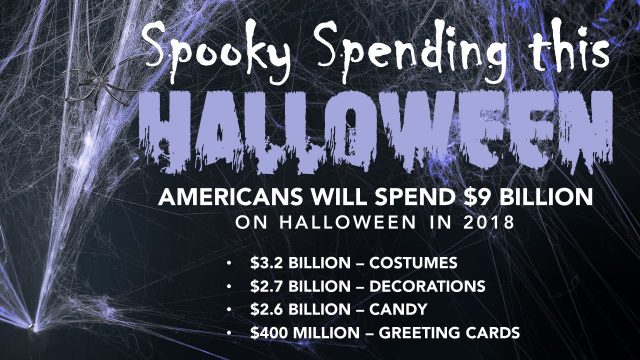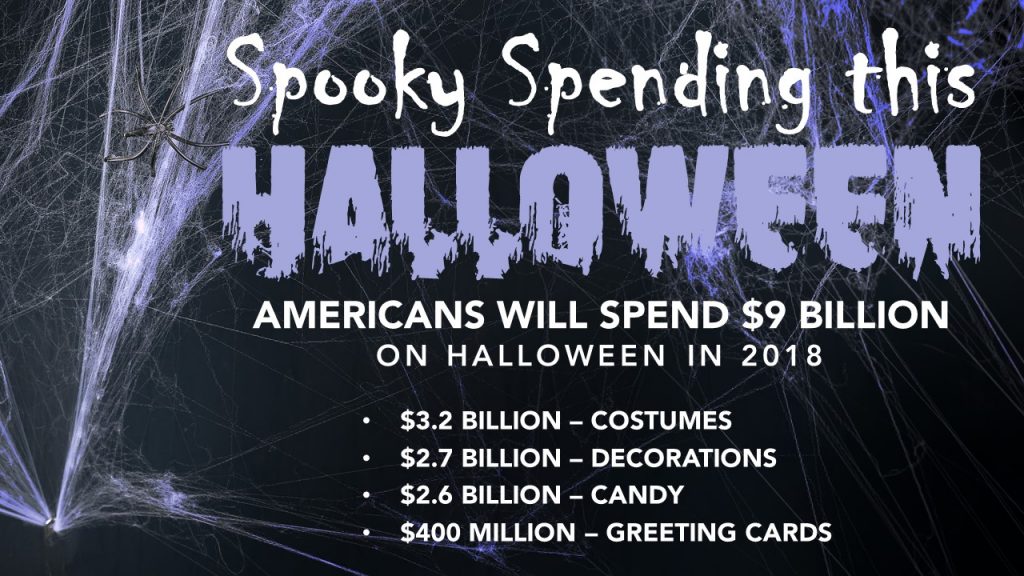Strong GDP Fails to Lift Markets

October 26th, 2018
It was another bruising week for markets as investors remained concerned over rising interest rates, tariffs, and a strong U.S. dollar. These concerns have become more pronounced as investors continued to pour over third quarter earnings results this week and as CEOs have provided cautious outlooks. High-flying tech shares, which had been a notable momentum play amid slow economic growth and favored for their limited exposure to tariffs, sold off this week as they failed to live up to investor expectations. Amazon and Google this week took the brunt of the impact in the tech sector as they missed revenue expectations. Industrials also had a tough week as global heavy machinery manufacturer Caterpillar sold off despite beating estimates and maintaining its earnings guidance in the face of tariffs. Investors appeared more concerned over its heavy exposure to foreign markets which could hurt its earnings going forward. On a positive note, despite recent tariffs, the U.S. economy continues to sprint ahead, with Q3 GDP up 3.50%. In overseas news, Eurozone factories struggled under the weight of tariffs as the Eurozone manufacturing index hit a 26-month low.
FAANGs Lose Their Bite
The FAANG (Facebook, Amazon, Apple, Netflix, and Google) stocks rode into the third quarter on high expectations. This week, Amazon and Google-parent Alphabet failed to impress as they released third quarter earnings results. Amazon’s third quarter earnings beat Street estimates, but missed on revenue and fell short on expectations for the fourth-quarter. Fourth quarter guidance was particularly weak, with revenue expected to range between $66.5 billion and $72.5 billion. That was well short of consensus estimates of $73.9 billion. The fourth quarter is key as it is the holiday shopping season, the biggest and most important sales period for Amazon. Alphabet, like Amazon, beat third quarter earnings estimates, but missed on revenue. Revenue was $33.7 billion versus estimates of $34.04 billion. Slower growth in the company’s cloud business and hardware sales in the second quarter weighed on revenue, which rose 29% year-over-year (yoy) to $4.64 billion. That was significantly less than the second quarter’s 37% yoy growth rate. Failing to live up to expectations led investors to lop off $80 billion in market value from the two stocks.
U.S. GDP Beats Estimates
The U.S. economy continued to expand in the third quarter with GDP growing 3.50%, beating estimates of 3.40%. Consumer spending, which accounts for about 68% of economic activity, surged 4.00% during the quarter. That was the fastest pace since the fourth quarter of 2014. Also contributing to growth, government spending was up 3.30%, driven by a 4.60% increase in defense spending and a 3.20% increase in state and local government spending. Imports also proved particularly strong, up 9.10%, driven by a move to beat U.S. tariffs. Exports and business spending though proved to be a drag on the economy. Exports fell -3.50%, reversing strong growth in the second quarter in which U.S. exporters of soybeans and other products rushed to ship products ahead of retaliatory tariffs from abroad. Business spending fell -7.90% for the quarter, its biggest quarterly decline since the first quarter of 2016. The drop in business spending was driven by a slowdown in spending in oil and gas rigs. Thus far, it does not appear U.S. consumers, the growth engine of the economy, are too concerned with the U.S.-China trade war as they continue to boost their spending to multi-year highs, supported by a strong jobs market and tax cuts.
Eurozone Factory Growth Slows
Eurozone factory floors continued to slow in October. The Eurozone Flash PMI, which is based on approximately 85% to 90% of total PMI survey responses, registered 51.2 in October. That was a slowdown from September’s 52.7 reading. Numbers above 50 indicate expansion, while numbers below 50 indicate contraction. The slowdown in manufacturing was due primarily to a decline in new export orders for goods which decreased for the first time since June 2013. On a country-specific level, Germany posted a moderate slowdown, sliding to its weakest level since May 2015 as goods exports fell at their steepest rate since June 2013. Tariffs appear to be taking their toll on Europe’s manufacturers, weighing on export growth.
Despite an overall positive earnings season with earnings projected to rise 25.20% yoy on revenue growth of 7.70% according to Refinitiv (formerly Reuters), a fog of caution appears to have settled over the markets. This had initially just impacted investors, but now nervousness is making its way into quarterly conference calls as CEOs have used the opportunity to manage future expectations and guide down future guidance as the market is getting hammered. Better to beat later than to be the company that stuck to its earlier guidance and happened to miss.
This is not to say that rising interest rates, tariffs and currency exchange rates are not having any impact on earnings. The end of easy money means the economy needs to stand on its own at some point. A strong currency is a sign of relative economic strength, which over time ebbs and flows, but it is a dependent variable not an independent variable. So, despite the fact that a strong dollar acts as a competitive disadvantage for U.S. companies, some solace should be taken that the strong dollar reflects stronger relative U.S. growth and demand. Tariffs are, admittedly not ideal, but are a necessity as a tool to renegotiate terms that are required to defend our longer-term competitiveness and equal access to global markets.
So, what’s changed? 2019 was always going to be a transitional year, but the biggest challenge for the market right now is what it always is – which is to say that perception is reality. Sure, markets are forward looking. Yes, 2019 is going to be a tougher year to make money than 2018 as rates rise, the current underlying economic momentum is detached from that of markets presently. Although interest rates are having an impact on the housing sector with new home sales declining, we suspect, like many other interest sensitive aspects in the economy, that this is transitional. A 5% rate on thirty-year mortgages are not historically abnormal, and only seem so when rates were at 4% this time last year. So, it would seem markets are at the “Can it? Will it?” moment for this economic cycle. This moment was always bound to come, and indeed you always hoped it would come, because that’s what strong economies ultimately have to do. They have to stand on their own, along with rising rates, in order to remain healthy. So, with the growth momentum we’ve seen in Q2 and Q3, the “Can it?” question seems all but answered. We’ve got a solid trend going in to this transitional period, but the question “Will it?” or “Won’t it?” is going to be determined by confidence and perception – and as of late, confidence has been hard to come by.
The Week Ahead
The Economy isn’t Spooking Anyone
Halloween is upon us, and according to the National Retail Federation (NRF), Americans will spend a frighteningly large amount of money on candy, decorations, and costumes. Halloween is the second largest commercial holiday behind Christmas, and it’s projected to rake in $9 billion in sales this year.

The holiday originated with a 3,000-year old ancient Celtic festival when people would light bonfires and wear costumes to ward off ghosts while marking the end of the year and the beginning of a new one. Celts believed that the boundary between the worlds of the living and the dead became blurred on the night of October 31, and the ghosts of the dead returned to earth. People would disguise themselves as a form of protection from any evil spirits.
The tradition of donning costumes is still going monstrously strong. Spending on costumes for people is forecast to reach $3.2 billion in 2018, while spending on pet costumes is estimated to ring in $480 million in sales which is more than double the amount spent on dressing up pets just eight years ago when the NRF started tracking pet costumes. The most popular pet costumes are pumpkin, hot dog, bumble bee, and devil.
The top five costumes for children are princess, superhero, Batman, Star Wars character, and witch. Adults appear to be gearing up for a more frightful evening with the top costumes for adults including witch, vampire, zombie, and pirate, according to the NRF survey.
Almost 75% of Americans will purchase Halloween décor, spending $2.7 billion, and around 90% of Americans will purchase candy, spending $2.6 billion. The average spending per person in 2018 is expected to reach a record high at $86.79 per person, up from last year’s $86.13. The fourth largest Halloween spending category might be shocking to some – $400 million for Halloween greeting cards.
It may seem frivolous and scary, but strong Halloween sales are a sign of a strong economy, and the Consumer Confidence Board reported that the Consumer Confidence Index — a measure of Americans’ attitudes about current and future economic conditions — reached 138.4 in September 2018, which is the highest level in 18 years.
When people are confident in the future, they are more willing to shop. That increases consumer spending, which is almost 70 percent of U.S. gross domestic product, and leads to economic growth. So, show no fear when it comes to Halloween spending.
